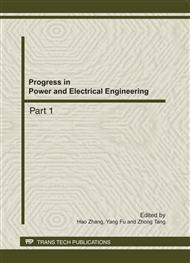p.922
p.927
p.931
p.938
p.943
p.947
p.953
p.959
p.964
Root-Cause Analysis Based on Time Delay Estimation for Alarm Systems in Power Grids
Abstract:
This paper studies the root-cause analysis based on the time delays among various signals, for reducing nuisance alarms in modern industrial systems including power grids. Time delays are estimated via the revised nearest neighbor imputation method, and are validated via the subsequent consistency check. Numerical examples including the IEEE 5-node system as a prototype power grid are provided to demonstrate the effectiveness of the proposed time delay estimation method and the subsequent consistency check.
Info:
Periodical:
Pages:
943-946
Citation:
Online since:
October 2011
Authors:
Price:
Сopyright:
© 2012 Trans Tech Publications Ltd. All Rights Reserved
Share:
Citation:


